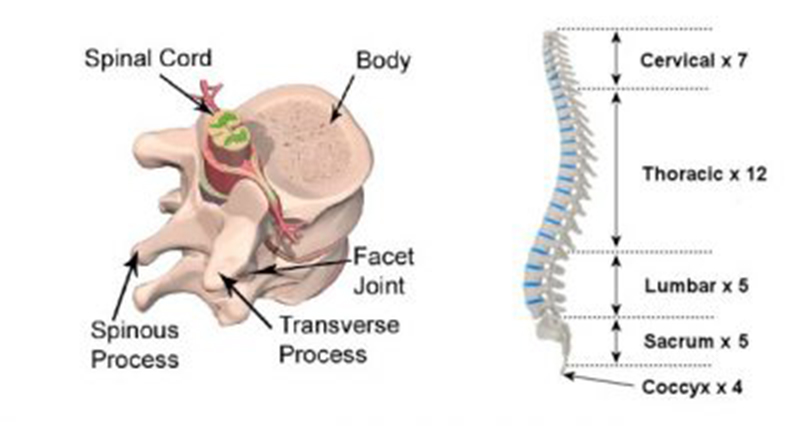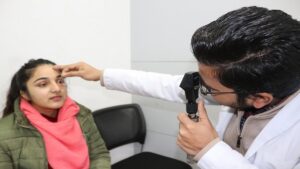
An Introduction to the Spine
The human spine is an arch-like structure consisting of vertebrae. It is also made up of Intervertebral discs, ligaments, and normal curves. This article will provide you with an introduction to the anatomy of the spine. It will explain what a vertebral disc is and the function it serves.
Vertebrae
Vertebrae are structures that connect the vertebral bones. These structures vary in shape and architecture among individuals. They can be classified into thoracic, lumbar, and sacral vertebrae. The classification of these structures is useful for diagnosis and treatment. Fortunately, there are several techniques available for accurately labeling vertebrae.
One method is to use image processing to improve the localization of vertebrae. The process involves analyzing a large image and identifying the points of vertebrae. The vertebrae are then localized by their centroid. The proposed algorithm has significantly higher accuracy than traditional methods of vertebra localization, which is useful for medical applications.
In a computer-aided diagnosis of diseases affecting the spine, automatic vertebrae localization is essential. Using a combination of structured regression forest and deep-stacked sparse autoencoder contextual features, this method automatically detects vertebrae in 3D images. The pixel spacing is approximately two pixels per vertebra. The centroid of the vertebra is located at the center of the image.
The results from the analysis show that the model is very accurate. The mean location error of vertebrae centroids is less than 3 mm. The maximum location error is 4.35 mm. The ROI identified by the predicted centroid is visually displayed in Figure 7c. Despite the error, the ROI contains the entire vertebra.
Intervertebral discs
They are the spine’s main shock-absorbing structure. These discs are located between the lumbar, cervical, and thoracic vertebrae and range in thickness from seven to ten millimeters.
The nucleus pulposus is the center of the intervertebral disc, and it serves as the spine’s primary shock absorber. It is composed of collagen fibers, elastic fibers, and proteoglycans. This tissue has a water content ranging from seventy to ninety percent. This water content gradually decreases with age. The nucleus pulposus is composed of loose collagen fibers and elastin.
Although there is no direct blood supply to the discs, they gain water by osmosis. This is the process by which particles move slowly from the outer surface of a cell to a deeper structure, such as an intervertebral disc. Therefore, the more water that a disc has, the better it can absorb shock and delay its degeneration.
The degeneration of intervertebral discs can lead to pain and injury. Obesity is also a strong risk factor for disc degeneration. The excess weight of the body and weakened muscles weaken the discs and increase the risk of injury.
Ligaments
The ligaments of the spine attach vertebrae to one another. They function to keep the spine straight by preventing the vertebrae from folding. They also protect the spinal cord and discs from damage. When the spine is in flexion, these ligaments are stretched to a certain degree. After this stretching, the ligaments to relax, and the spine returns to its neutral position.
A number of in-vitro studies have been conducted to characterize the mechanical properties of spinal ligaments. These results have been inconsistent because of the large variation in the stiffness of ligaments between individuals.
The intersegmental ligament connects two adjacent vertebrae. The intertransverse ligament links vertebrae at the level of the sacrum. Each of these three types of ligaments is responsible for differentiating between scapular and thoracic segments.
The BMP-2 gene polymorphism has been associated with the development of ossification of spinal ligaments. This polymorphism causes a change in the amino acid sequence from arginine to leucine. This changes the protein’s function and increases the levels of Smad4 and ALP.
Normal curves
If you were to look at an adult’s spine from the side, it would appear to have a gentle “S” curve. On the other hand, when viewed from the front, it would appear straight. These curves help to keep the spine in proper alignment and maintain posture. The spine’s curves also play a major role in balance and muscle strength. It’s essential to understand your spine’s normal curves in order to avoid disorders that compromise your spinal structure.
The spine has two natural curves – kyphosis and lordosis. Both of these curves are helpful in carrying the weight of the trunk. This disorder makes the patient appears stooped forward and has trouble standing upright.
The natural curves of the spine are important for maintaining the spine’s flexibility and support. This inward curve allows the spine to absorb shock and maintain balance in both the forward and backward planes.
Although the curves are useful for guiding treatment decisions, there are some limitations to their usefulness in everyday clinical practice. However, they are still useful in determining how to manage back pain and improve posture.
Diseases
Infections in the spine are a common cause of pain. The most common cause is Staphylococcus aureus. There are a number of risk factors that increase the chance of developing spinal infections.
The lumbar spine is the most commonly affected region, followed by the cervical and thoracic spines. Modern lifestyles often result in weak rump muscles. Degenerative spine diseases often cause a loss of mobility, weakness, and numbness. Fortunately, treatments are available to address these symptoms, although they are not a cure.
Inflammatory disorders of the spine include rheumatoid arthritis and osteoporosis. These conditions cause the spine to degenerate into a fusion, leading to pain and disability.
Ankylosing spondylitis is another common disorder that affects the spine. Pathological curvature of the spine causes excessive strain on the joints of the lower extremities. This condition can be treated with chemotherapy. Some people experience pain in their low back and sacroiliac joint pain.
Spondylolisthesis is a common cause of children’s low back pain. Children who play sports are at an increased risk for this disorder.
Treatment
Treatment of the spine involves therapeutic interventions. One such intervention is spinal manipulation.
While manual spine treatment has many benefits, the risks are also known. Although the incidence of adverse events is low, it is important to provide patients with adequate information about the risks during the consent process.
In some cases, a doctor might perform a discectomy to relieve pressure on a pinched nerve. Another option is spinal fusion, which joins vertebrae to reduce movement. Another procedure is foraminotomy, which expands the portion of the vertebrae where the nerve roots branch out.
Depending on the severity of the problem, a person may need to visit a neurosurgeon or an orthopedic surgeon. During a consult with a spine surgeon, a doctor can examine the patient’s condition and prescribe the appropriate treatment. Other options include taking corticosteroids to alleviate pain and taking supplements.
Radiation therapy can also shrink tumors and reduce pain. However, conventional radiation therapy doesn’t control pain for most patients with spinal metastases. In addition, the radiation dose must be low to avoid damage to the spinal cord.




